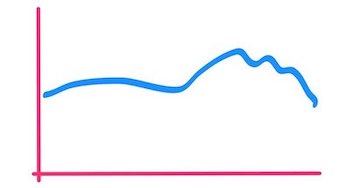By Jürgen Kraus
Frequency-response measurements help in characterizing the sound of an earphone/headphone (actually, the relative quantities between frequencies) of an earphone/headphone.
The resulting frequency graphs are therefore entirely quantitative but not qualitative. They cannot tell you whether an earphone or headphone sounds good, but they may tell you whether it sounds bad.
This writer says it well: “Here at XXX most people believe BOTH measurements and subjective comparisons are valuable together and intrinsically intertwined. The intersection and diversion of the two are where the interesting discussion and actual learning happens.”
Frequency-response graphs carry important information of an earphone’s DNA. They visualize sound quantity and assist with…
- Getting a basic characterization (“flavour”) or an earphone:
- Early warning of sibilance, harshness, hardness, and piercing
- Risk minimization: matching of earphone and personal preferences before buying
- Information on bass and treble extension, and midrange recession
- Quality control (channel matching; detecting internal mis-wiring)
- Comparison of earphone flavours (by graph superposition)
- Guiding the different steps of modding
- Checking sound variations over time (e.g. before and after break-in)
What the frequency response graphs don’t tell us is technicalities such as
- Timbre
- Soundstage
- Layering, separation, detail resolution
- Dynamics
The graphs per se don’t tell you anything about sound quality such as timbre, particularly the degree of sound realism (e.g. accurate reproduction of an orchestra), as well as attack/decay/transients, layering, separation, detail, dynamic range, and soundstage.
But, in some cases, the FR graphs can give indirect evidence of quality: for example, huge upper midrange peaks at around 3 kHz can be indicative of low-quality drivers (they have to compensate for a thin lower midrange, which can make the sound overly harsh and aggressive). It may also point to sibilance (7-10 kHz peaks) and fake resolution (15 kHz area peaks).
Nevertheless, frequency response in the context of a reviewer’s description of tonality and their known preference (or your own), should give you a good idea whether a certain earphone will likely appeal to you or not.
In summary, frequency response measurements only tell you half the story – but if you ignore them, this half is missing. They are complimentary to one’s listening impressions and should therefore be a standard staple of every review.
You find four pages in the pull-down sub-menus below this one:
- JK/Biodegraded’s measurement setup explained
- Standard raw requency response curves
- Annotated diagrams correlating graphs and sound (incl. limitations)
- Superimposed frequency response curves (for earphone comparisons)





